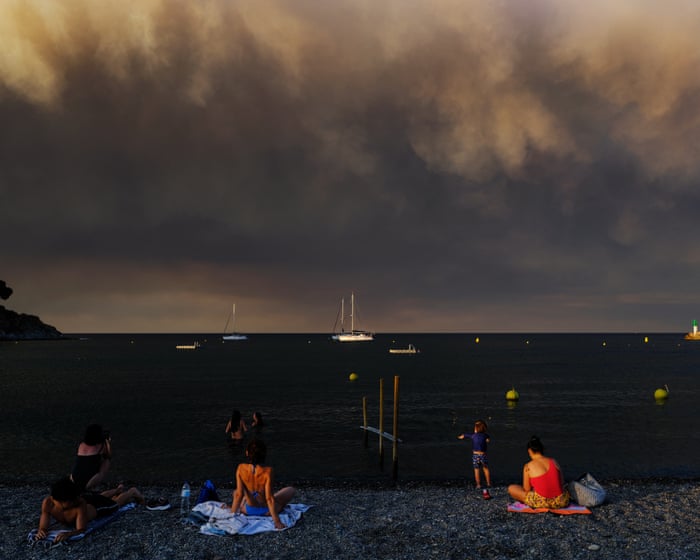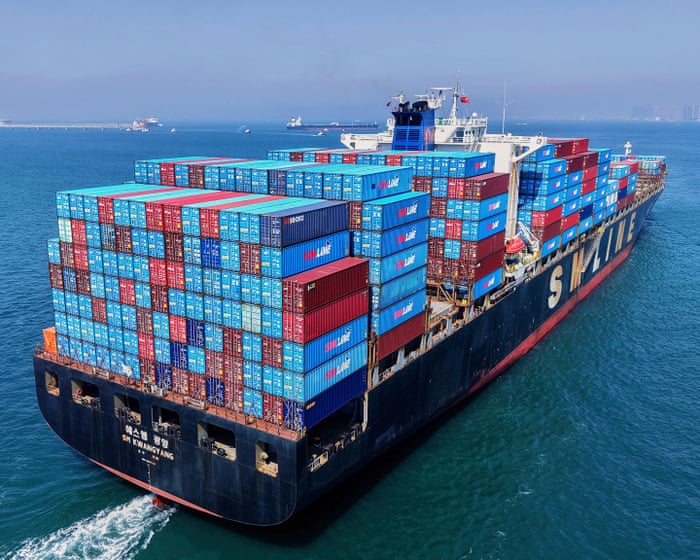It was a prediction no one wanted to hear. On the main stage of the world’s largest tourism fair, Stefan Gössling, a leading expert in sustainable transport, calmly announced the approaching end of the holiday industry.
“We have already entered the beginning of the age of non-tourism,” Gössling told an uneasy audience of travel agents, car rental firms, cruise operators, and hoteliers.
That warning might sound far-fetched to vacationers in Europe and North America who have been flying off on summer trips—or to industry leaders pleased to see international tourism bounce back to pre-pandemic levels last year. But Gössling argues that as carbon pollution worsens heatwaves, fuels wildfires, and damages harvests, the cost of international travel will rise sharply, making it unaffordable for many.
“Eighty years ago, mass tourism began in Europe,” said Gössling, a professor at Sweden’s Linnaeus University who has advised the UN and the World Bank. “Eighty years from now, I doubt much tourism will be left in the world.”
Gössling points to many places already feeling the pressure. Warmer weather is melting the snow that Alpine ski resorts depend on. Coastal erosion is washing away sand from southern European beaches. Droughts are forcing Spanish hotels to truck in fresh water while swimming pools sit empty, and wildfires are scorching picturesque Greek islands.
According to a recent study Gössling co-authored, which combined climate risks with reliance on tourism, the South Aegean islands—including popular destinations like Kos, Rhodes, and Mykonos—are the continent’s most critical hotspot. Next are the Ionian islands, such as Corfu.
The financial strain from these issues, likely to be passed on to travelers, will be made worse by rising food costs—from coffee to chocolate to olive oil—and growing demand for insurance against extreme weather.
“Right now, the impact is local,” Gössling told the Guardian earlier this year at ITB Berlin, the world’s biggest tourism industry gathering. “But in the future, it will happen more often, affect more places, and become truly disruptive.”
Whether these rising costs will outpace expected growth in global incomes is still debated—some damage can be avoided through adaptation, though that also comes at a price. Even if extreme weather is kept in check, tourists may still feel the squeeze. If carbon pollution drops sharply—essential to curb global warming—the cost will hit sectors like aviation the hardest, due to physical and technical limits.
Some governments are considering carbon taxes on flights to fund the shift to clean energy and help poorer nations cope with climate damage. Environmental groups are pushing for a frequent flier levy, which would charge more for each additional flight taken in a year.
Despite Gössling’s blunt criticism of the tourism industry’s decarbonization efforts—”what the whole sector is doing is greenwashing”—he is still seen as a vital voice. The conference promoted his talk as a “must-hear session for anyone who cares about the future of travel and our planet.”
He noted that some progress is being made, like hotels installing solar panels and more people recognizing the problem.
“We have a huge difficulty moving from awareness to action,” said Gössling. “But people are starting to see the risks and want to understand the business implications. The message isn’t welcome, but it certainly makes them think.”
In academic circles, Gössling is best known for research quantifying tourism’s growing carbon footprint—which accounts for 8.8% of global emissions.Eating pollution and the inequality in aviation emissions (only 2-4% of people fly abroad in a given year) are key issues. His research shows that just 1% of the world’s population is responsible for half of all air transport emissions, reinforcing activists’ demands for governments to prioritize reducing premium and business travel.
“If that group flew half as much—which would still be plenty, even for business travelers—we could cut aviation emissions by 25%,” he said. “Just by having a very small group travel a bit less.”
However, he also pushes back against the idea that ordinary people in wealthy countries can continue taking long-haul flights and excuse it by pointing to even bigger polluters. “Our main concern is long-distance travel,” he noted, referring to gap years and Gen Z influencers who promote travel as an aspirational lifestyle.
“Everyone sees tourism as a system where governments and companies are responsible,” said Gössling. “But we are the system. It’s our individual actions that add up to global problems.”
Frequently Asked Questions
Of course Here is a list of FAQs about the impact of heatwaves wildfires and rising costs on overseas holidays with clear and direct answers
General Beginner Questions
1 Is it still safe to travel overseas with all these heatwaves and wildfires
Yes it can be but it requires more planning You need to stay informed about your destinations weather air quality and any travel advisories before and during your trip
2 Why are travel costs rising so much
A combination of factors including higher fuel prices increased demand after pandemic restrictions eased and general inflation which affects everything from airline operations to hotel and food costs
3 Are overseas holidays becoming a thing of the past
Not at all Instead they are evolving People are adapting by choosing different destinations traveling in offpeak seasons and budgeting more carefully
4 Whats the biggest risk heat fires or cost
This depends entirely on your destination budget and personal health For a family on a tight budget cost might be the biggest hurdle For someone with respiratory issues traveling to a fireprone area air quality is the primary concern
Destination Planning Questions
5 Which destinations are most affected by extreme heat
Popular summer destinations in Southern Europe the southern United States and parts of Southeast Asia are experiencing more frequent and intense heatwaves
6 When is the best time to travel to avoid extreme heat
Consider the shoulder seasonsspring and autumn for many destinations The weather is often still pleasant but the extreme peak summer heat has passed
7 Should I avoid certain countries altogether
Its less about avoiding countries and more about avoiding specific regions during their highrisk seasons For example you might avoid the Mediterranean in peak JulyAugust but visit in May or September instead
8 What are some good alternative destinations that are less affected
Consider countries with milder climates such as those in Northern Europe Canada or New Zealand Traveling to higher elevations within a country can also be cooler
Practical Tips ProblemSolving
9 How can I protect myself from extreme heat while on holiday
Stay hydrated avoid strenuous activity during the hottest part of the day




